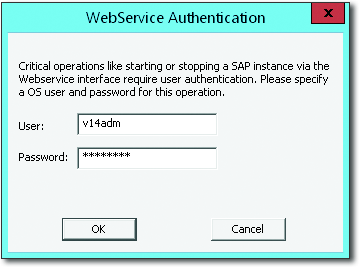
How to start and stop an SAP system using SAP Micro-soft Management Console (SAP MMC). SAP MMC can only be installed on Microsoft operating systems.
Follow these steps to start the SAP system:
1.Start the server and the operating system. Check the operating system log to determine whether the start has been successful.
2.Start the database. Check the database log to determine whether the start has been successful.
Starting the Database
This step is optional because the database is started first automatically by the start script when you start the SAP system. However, if you start the database manually, you can check the database log before starting the SAP system.
SAP Microsoft Management Console
The following section describes how to start and stop an SAP system using SAP Micro-soft Management Console (SAP MMC). SAP MMC can only be installed on Microsoft operating systems. However, you can use it to manage SAP systems from your Windows frontend. These SAP systems can run on any other operating systems (e.g., UNIX). In addition, you always have the option to directly start the SAP system on the server via the console or by using terminal client software, such as PuTTY, on your frontend computer. For this purpose, log in using the adm user, and start the SAP system by entering the startsap command in your console.
- Open SAP Microsoft Management Console by choosing Start (All) Programs SAP Management Console from the taskbar.
- Right-click on the system ID of the system you want to start (e.g., V14), and choose the Start entry from the context menu (see Figure 1).

- Enter a Start timeout period in seconds in the dialog box that opens. If you’re only running a single instance, simply click on OK to confirm (see Figure 2).

Start Timeout
A start timeout is only relevant if you’re running other system instances alongside the central instance. The central instance must be running before you can start the other instances. Entering a start timeout value indicates how many seconds the system should wait before starting the other instances. The value is based on the length of time it takes to start your central instance, based on past experience.
- Another dialog box opens in which you must authenticate yourself as the administrator of the SAP system (see Figure 3). Only administrators are. authorized to start and stop an SAP system.

- This automatically starts the database (if it hasn’t already been started) and then the SAP system. In the SAP Microsoft Management Console, the status is initially yellow, which changes to green after a successful start. In the Process List, all processes have the Running status (see Figure 4).

Patience Is a Virtue
It may take several minutes to start an SAP instance. Patience really is an essential characteristic of good system administrators. You need to wait and remain calm if it takes. longer than expected. A red traffic light icon will alert you to the occurrence of errors. As long as you don’t see any red traffic lights, simply give the system the time it needs.
- The system has started. To check whether the SAP system is running, log on to the system with the SAP GUI. You know that the system has been started correctly if the logon screen appears (see Figure 5).
Checking the Start Logs
If problems occur when starting the system, you need to check the start logs. You’ll find these logs at theoperating system level in the /usr/sap/<SID>/<instance>/work directory. Check for error messages in the following files:
- sapstart.log
- sapstartsrv.log
- dev_disp
- dev_ms
- dev_w0
Eliminate the error, and restart the system.

- Log on and check the system log (Transaction SM21) to determine whether any errors occurred at startup.
Checking the System Log after Startup
You should wait for a minute or so after starting the SAP system. This makes it easier to read the system log. Several entries may still be in the process of being written to the log during the start phase. If you wait, you won’t need to refresh the system log view several times to display all of these.